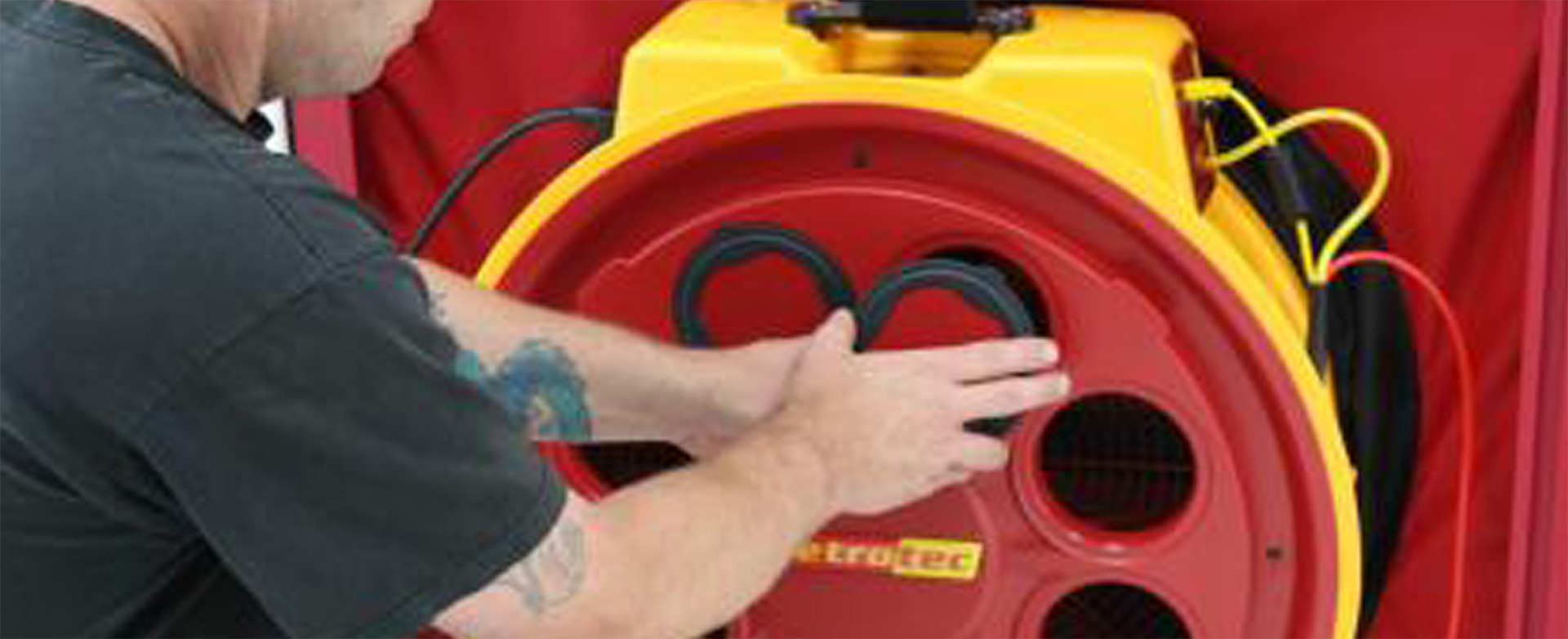5 Questions To Ask Yourself When Choosing A Duct Tester
Duct leakage is a large contributor to comfort issues, indoor air quality and energy consumption in a home. Typical duct systems lose 25 to 40 percent of the heating or cooling energy generated by the central furnace, heat pump, or air conditioner*. Because of this, more states are adopting and enforcing duct tightness requirements for new construction and new system installations. Duct testers are the tools used to measure and expose air leaks in a duct system. It is a calibrated fan with a high-precision manometer that attaches to the duct system, usually at a return grille or at the air handler. The duct system is then sealed with a special grille mask tape or grille caps and pressurized or depressurized to 25 Pa of pressure. The high-precision manometer that comes with the duct testers kit converts the pressure reading into cubic feet per minute of air flow at 25 Pa (CFM25). This CFM25 reading is the desired leakage result.
Most codes require the duct leakage to be a percentage of the floor area served by the HVAC system. Codes typically require leakage to be no more than 4% - 7%. For example, if the code requires 6% leakage and the system serves 1,000 sq.ft. of conditioned floor area, the leakage result must be equal to or less than 60 CFM25.
Duct testers are used to determine the overall quality of HVAC duct systems, which means the quality of the duct tester you use matters quite a bit. Therefore, you are going to want the best product available so you can work smarter, not harder. When shopping for a duct tester, here are some questions to consider to help ensure you are getting the most bang for your buck.
Durability: Will it last? – Not all duct testers are created equally. Remember, you will be hauling this piece of equipment to construction sites and loading and unloading it repeatedly. This tool is an investment, so it must stand the test of constant labor over time. Durable duct tester fan housings are made with high-impact automotive plastic. Makroblend® resins have a property profile that includes high toughness (even at low temperatures), good chemical resistance to many lubricants, solvents, and cleaning agents, along with reduced susceptibility to stress cracking. The most durable duct testers also have a design to prevent accidents from happening. For example, the Retrotec line of DucTesters all have a flat foundation to prevent it from rolling and a handle molded into the fan shell so it doesn’t break when it is being picked up or carried.
Accuracy: Can I trust the measurements I am taking? – At the end of the day, the reliability of your duct tester is determined by the accuracy and repeatability of your measurements. The most reliable duct testers are calibrated by an ISO 17025/ILAC accredited lab which is required in many countries. This goes for both the duct tester fans and the digital manometers used for airtightness testing.
Your duct tester fan and gauge should come with a NIST traceable calibration certificate. Look for the accreditation seal on your certificate to ensure your tool was calibrated with NIST traceability and stated uncertainties. Just as our buildings and HVAC systems need third-party testing and verification to be healthy and efficient, the tools that do the testing should also have rigorous third-party evaluations to help ensure top quality.
State-of-the-art digital 14-bit pressure sensors provide you with the precision and accuracy, so this is something you should look for in a high-resolution digital manometer. Auto-zero manifolds minimize sensor drift, allowing the system to maintain its accuracy over a longer period of time.
 Intelligent Design: Is it easy to use and intuitive? – The duct tester kits that have the least amount of user error have color coded tubing connections. This also allows for quicker setup. Retrotec is the only manufacturer that provides color coded pressure ports and tubing with all their DucTester models. Other manufacturers do not have a color-coding protocol which can lead to errors when setting up the device. Setting up kits without a color-coding protocol can be tricky to remember, especially if you do not test often.
Intelligent Design: Is it easy to use and intuitive? – The duct tester kits that have the least amount of user error have color coded tubing connections. This also allows for quicker setup. Retrotec is the only manufacturer that provides color coded pressure ports and tubing with all their DucTester models. Other manufacturers do not have a color-coding protocol which can lead to errors when setting up the device. Setting up kits without a color-coding protocol can be tricky to remember, especially if you do not test often.
The method used to switch from pressurization to depressurization should also be considered when selecting a duct tester. Some manufactures require additional tubing and a flow straightener when depressurizing the system. These additional steps can lead to more user error and additional troubleshooting. The Retrotec line of DucTesters and switch air flow direction in only a few seconds.
Ergonomic design is also essential when selecting a duct tester kit. Some duct tester manometers allow the user to operate it quickly with one hand, while others require two hands due to the layout of the device. The Retrotec DM32 is designed to fit in one hand like a smart phone, allowing users to navigate settings quickly. The Retrotec Model 340x also has a magnetic plate on the fan shell that the manometer attaches to. This keeps the manometer off the floor and out of harm’s way. The DM32 manometer also works with competing products. So, if you already own a kit from another manufacturer, the DM32 can not only handle it, but improve your testing experience with that product.
Quick Setup and Tear Down: Will it save me time? – There is an old saying that “time is money.” This absolutely applies to the building and HVAC industries when it comes to diagnostic testing. Be sure to select a system that will allow you to set up the equipment, run tests, and pack up as quickly as possible so you can move on to your next task.
Time-saving design aspects to consider include the method for attaching the flex to the duct tester fan and HVAC system. The method used to change the range or orifice should also be noted when selecting a duct testers kit. For example, on the Retrotec 340x residential DucTester, a quick connect collar is included to allow for a fast transition between pressurizing and depressurizing the ducts. There is also a clear flange that quickly hooks to a return grille. This prevents the user from struggling to tape a flange to the grille when the return is in the ceiling. For both of their residential and commercial DucTesters, Retrotec designed their orifices, or ranges, so they can be quickly changed without disassembling any other parts of the tool. The amount of time it takes the manometer to boot up is another thing to consider. Retrotec has the only high-precision digital manometer that boots up instantly.
Experience: Who can I count on when I have questions? – Retrotec first developed the residential duct tester in 1989 for the Canadian government. Since then, Retrotec’s DucTester models have evolved extensively with the introduction of digital manometers, lighter and more durable fan shells, wireless capabilities, and features that make setting up the system quick and easy.
Retotec has been manufacturing air tightness testing tools since 1980 and has unmatched industry experience in diagnostic tool design, fan and manometer calibration, and testing in the field. We have tech support, trainers, and building science specialists available to answer any of your questions as you dive deeper into your duct testing experience.
Hopefully this article has provided some guidance and direction as you continue your quest to find the right duct tester kit for you. As you can see, they are not all the same. Just as our buildings and HVAC systems continue to improve with new technology and third-party testing procedures, the same goes for our testing equipment. Retrotec is constantly researching new technology to improve accuracy, speed, and ease of use while putting our own laboratory, processes, and personnel through the most rigorous third-party accreditation processes on the planet. This ensures you get the best possible product. If you have any further questions, feel free to reach out to [email protected] or give Retrotec a call at 1 (855) 738-7683.




